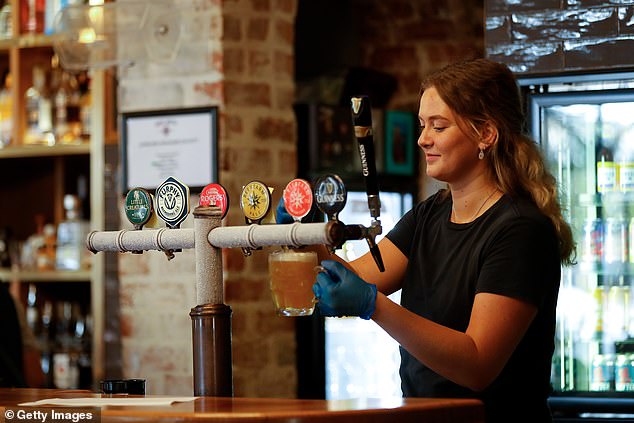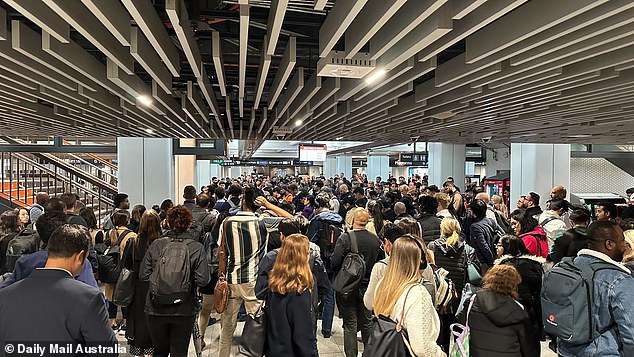- Wage growth has slowed during increased immigration
Australia’s cost of living crisis is worsening as high immigration hits wage growth.
Wage levels in the year to September fell again to 3.5 percent, marking the weakest growth in two years.
Headline inflation during the same period fell to 2.8 percent, thanks to one-time $300 electricity rebates from the federal government.
But with wage growth now at weaker levels, inflation-adjusted real wages are growing by just 0.7 per cent, despite Labour’s election promise to “get wages moving again”.
This occurred as 449,060 net migrants moved to Australia in the year to September, expanding the available labor pool.
This is significantly higher than the government’s forecast of 260,000 for the 2024-25 financial year made in the May Budget.
The latest immigration figures from the Australian Bureau of Statistics have confirmed Treasury Secretary Steven Kennedy’s admission last week at a Senate hearing that more foreigners will continue to arrive permanently and long-term than expected .
“Instead of leaving, many immigrants have extended their stay by applying for new visas, including permanent visas,” he said.
Australia’s cost of living crisis worsening as high immigration hits wage growth
“The lower-than-expected migrant departures mean that net overseas migration is likely to be higher in 2023-24 and 2024-25 than forecast in the Budget.”
The large influx of migrants means greater demand for health, education and insurance, with services inflation soaring 4.6 per cent and preventing the Reserve Bank of Australia from cutting interest rates.
Institute of Public Affairs deputy chief executive Daniel Wild said high immigration was fueling Australia’s cost of living crisis, with underlying inflation still above the Reserve Bank’s 2 to 3 per cent target, with 3.5 percent.
“Australians struggling with the cost of living crisis and rising housing costs cannot rejoice at the latest immigration record,” he said.
“This shows, once again, that the federal government has no intention of stopping the wave of record inflationary migration that is leaving Australians worse off.”
The rental vacancy rate in Australia’s capital remains very tight at 1.2 per cent, and data from SQM Research also shows housing rents rose 4.9 per cent in the year to November at an average level of $837 per week.
Real estate is also particularly unattainable, with house prices in the capital in the year to October soaring 6.5 per cent, surpassing the $1 million mark, CoreLogic data showed.

Wage levels in the year to September fell again to 3.5 percent, marking the weakest growth for two years.
Civil servants fared better: Their salaries grew 3.7 percent over the year compared with 3.5 percent for those in the private sector.
Australian Industry Group chief executive Innes Willox warned of inflationary consequences if public sector wages continued to exceed those in private business, something that has not happened since before the pandemic.
“Higher wage outcomes in the public sector only add unnecessary fuel to the persistent inflationary fire,” he said.
Weak productivity means that costs such as wages are passed on to consumers through higher prices, prolonging high inflation.
“It is important that all parties come together to continue to slow wage growth, especially without clear and demonstrable productivity trade-offs,” Mr Willox said.
Prime Minister Anthony Albanese faces a difficult re-election next year if inflationary pressures fail to moderate.

